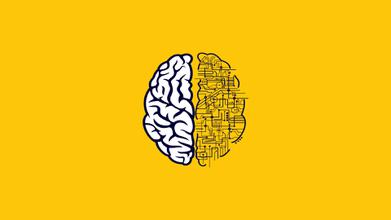What is Machine Learning?
Oct 27, 2021 12592 seen
Machine Learning: Why it matters?

Machine learning is a branch of artificial intelligence (AI) and computer science that focuses on using data and algorithms to simulate the way humans learn, gradually increasing its accuracy.
IBM has a rich history of machine learning. One of them, Arthur Samuel, is famous for coining the term "machine learning" in his research on the game of checkers. Robert Neely, a self-proclaimed checkers master, played the game on an IBM 7094 computer in 1962 and lost to the computer. This feat appears almost trivial in comparison to what can be done today, but it is regarded as a significant milestone in the field of artificial intelligence. Over the next two decades, data storage and processing technology will create some of the innovative products we know and love today, like the Netflix recommendation engine or self-driving cars.
Companies can use machine learning to automate routine tasks. It also aids in the automation and rapid creation of models for data analysis. Various industries depend on massive amounts of data to optimize their operations and make smart decisions. Machine learning aids in the development of models capable of processing and analyzing massive volumes of complicated data to produce correct results. These models are accurate, scalable, and perform with less turnaround time. By building such accurate machine learning models, companies can seize profitable opportunities and avoid unknown risks.
Some Machine Learning Methods

-
Supervised machine learning algorithms can use labeled examples to anticipate future events, allowing them to apply what they've learned in the past to new data. The system can provide targets for any new input after appropriate training.
-
In contrast, unsupervised machine learning algorithms are used when the information used for training is not classified or tagged. Unsupervised learning is the study of how computers may infer a function from unlabeled data to explain a hidden structure. The system does not determine the correct outcome, but rather studies the data and can infer hidden structures from untagged data from datasets.
-
Semi-supervised machine learning algorithms fall somewhere between supervised and unsupervised learning because they use both labeled and unlabeled data for training - usually a small amount of tagged data and a large amount of untagged data. The training accuracy of systems that use this strategy can be considerably improved. Typically, semi-supervised learning is chosen when the tagged data obtained requires qualified and appropriate resources to train it. Otherwise, obtaining untagged data usually does not require additional resources.
-
Reinforcement learning algorithms are a learning method that interacts with the environment to perform actions and detect errors or rewards. Search by trial and error and delayed gratification are the most important characteristics of reinforcement learning. This method enables machines and software agents to automatically select the best behavior in a given situation to improve their efficiency. For the agent to know which action is best, simple reward feedback is required; this is referred to as a reinforcement signal.
How To Get Started With Machine Learning?

To get started with machine learning, let's take a look at some important terms used in machine learning:
-
Model. A machine learning model, also known as a "hypothesis", is a mathematical representation of a real process. A machine learning algorithm works with the training data to create a machine learning model.
-
Characteristic: A characteristic is a measurable property or parameter in a dataset.
-
Function vector: This is a collection of several numeric functions. We use it as input to a machine learning model for training and prediction purposes.
-
Training: The algorithm takes as input a dataset known as “training data”. The learning algorithm finds patterns in the input and trains the model on the expected results (goals). A machine learning model is the end outcome of the training process.
-
Prediction: Once the machine learning model is ready, input data can be entered into it to provide a predictable result.
-
Target (label): The value that the machine learning model should predict is called the target or label.
-
Overfitting: When a large amount of data trains a machine learning model, it tends to learn from noise and inaccurate data inputs. Here, the model cannot properly characterize the data.
-
Insufficient match: This is a scenario where the model cannot decipher the underlying trend in the input data. This reduces the accuracy of the machine learning model.
Python, a rising star in the field of Machine Learning, is frequently the first choice for achieving success. As a result, a Python Machine Learning guide is essential. Therefore, the library developers, which we will talk about below, have chosen Python as their language. And, as data analysts and scientists, we can simply use their masterpieces to help us get things done.
These are incredible libraries that are essential for machine learning with Python.
Numpy
Famous Numerical Analysis Library. It will help you with many things, from calculating the median of the data distribution to handling multidimensional arrays.
Pandas
For handling CSV files. Of course, you will need to process some tables and view statistics, and this is the correct tool that you want to use.
Matplotlib
Once you have the data stored in Pandas data frames, you might need some visualizations to understand the data better. Images are still better than a thousand words.
Seaborn
It is also another visualization tool, but more focused on statistical visualization. Things like bar charts, pie charts, curves, or maybe correlation tables.
Scikit-Learn
This is the last boss of Python machine learning. THAT IS THE CALLED MACHINE LEARNING WITH Python. Scikit-Learn. Everything you need is here, from algorithms to enhancements.
Tensorflow and Pytorch
I don't talk too much about these two. But if you're interested in deep learning, take a look at them, it's worth it.


